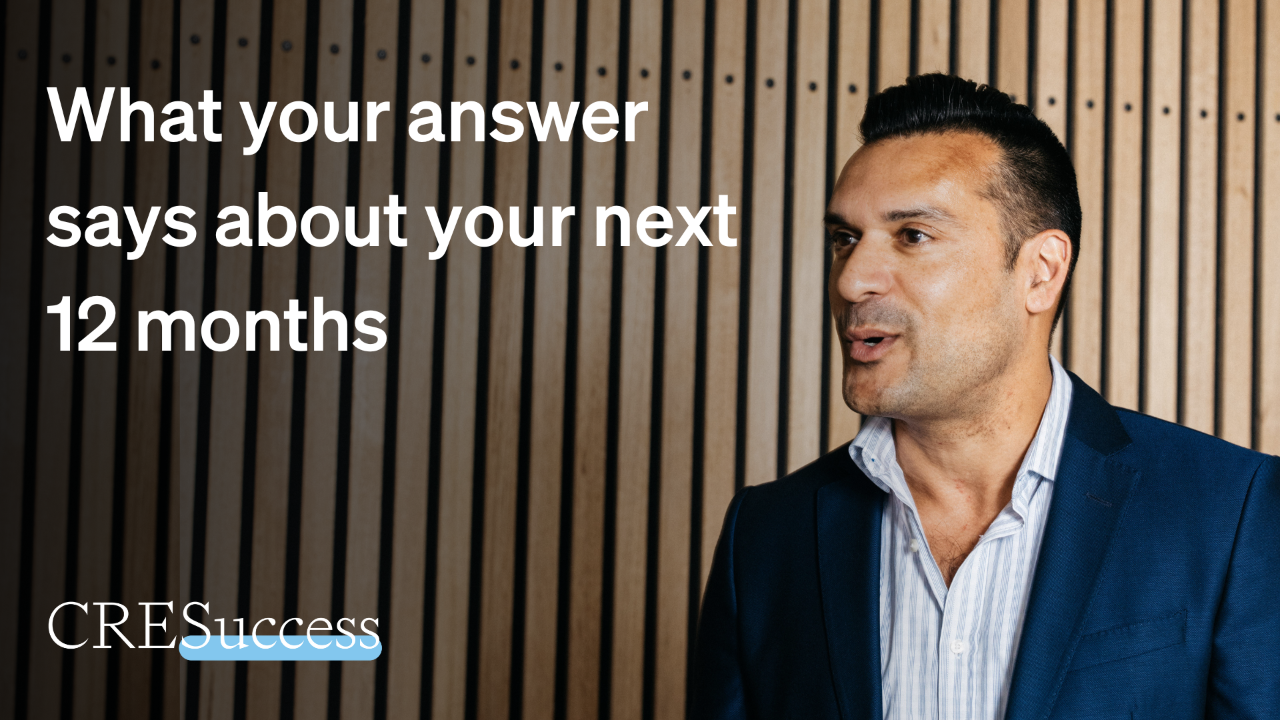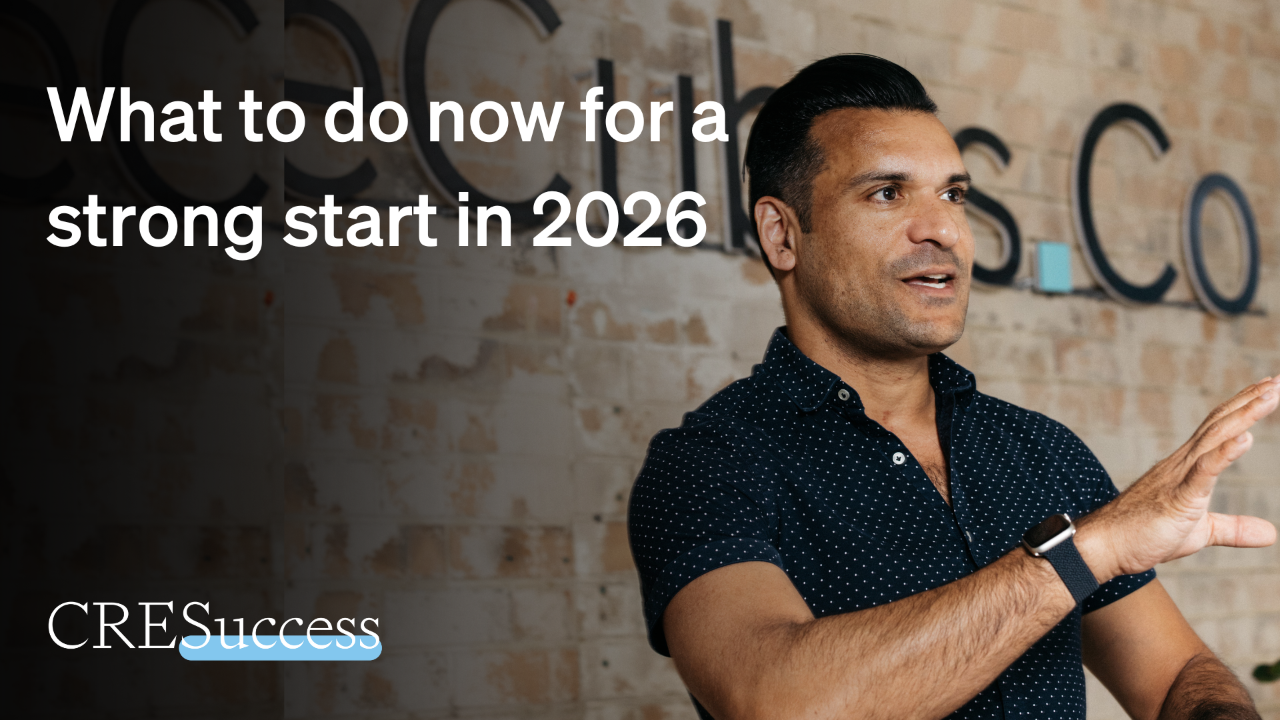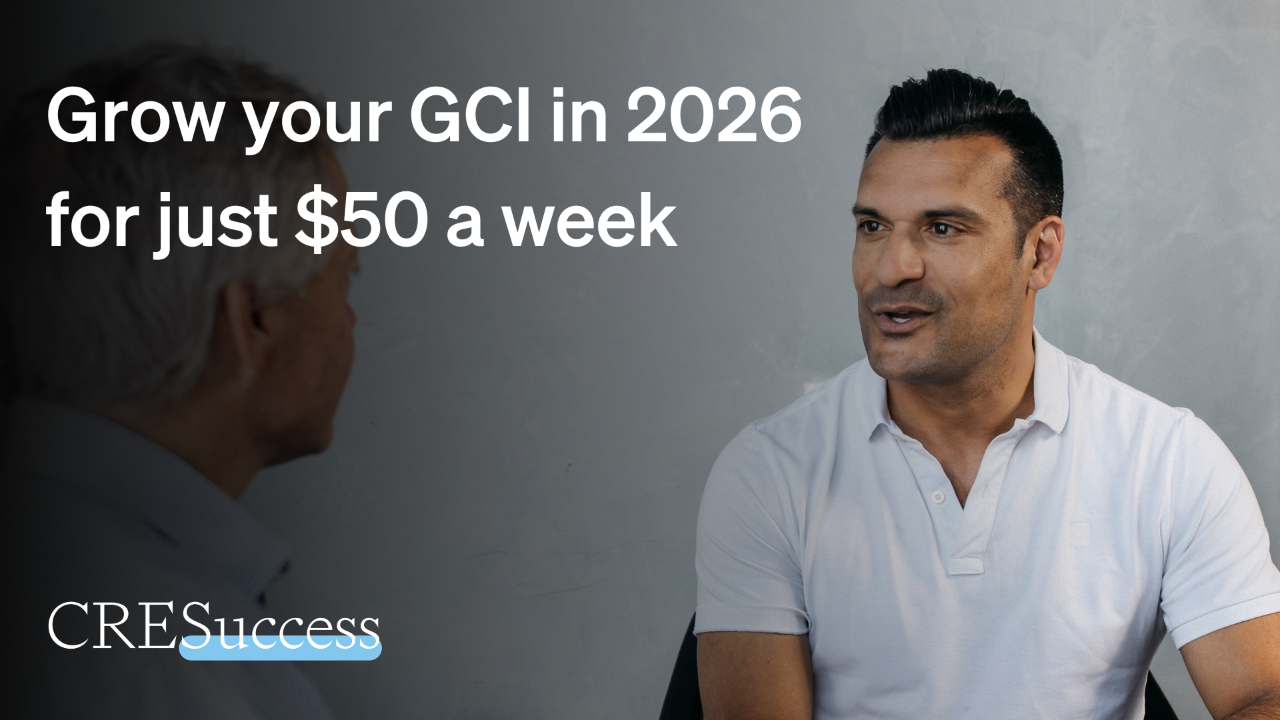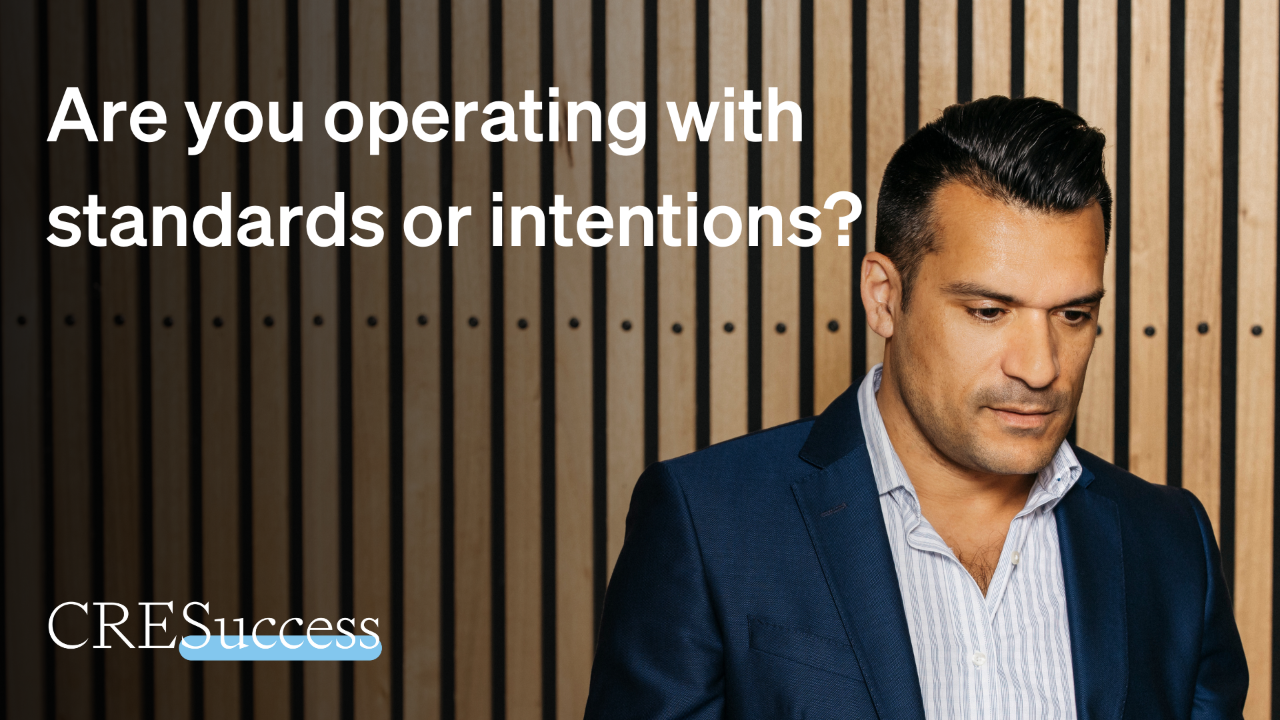Cut all of your emails down to 100 words or less
May 19, 2022
TL; DR stands for too long, didn't read.
It’s the author admitting most people won’t read a long email or blog post.
They’re not wrong: the average time spent reading an email is just 13.4 seconds…it’s 37 seconds for blogs (hopefully you’re still there!).
Instead of providing a TL; DR summary, why not make the final cut of every email you send to be the one that everyone actually reads?
In episode 88 of CRE Success: The Podcast, I’m sharing a formula to write effective emails in less than 100 words, so your emails are opened, read and actioned faster!
BTW, not including this sentence, today’s blog post is 99 words. See what I mean? You made it to the end.
Episode transcript:
Do you know the real reason why people aren't reading your emails?
It might not be what you think. I'll tell you what it is in today's episode.
Hello, welcome to Episode 88 of the show. My name is Darren Krakowiak. And if you work in commercial real estate, I'm here to help you save time earn more, and be a top performer in your market.
That is the work I'm doing every single day with our members inside CRE Success: Membership.
If you want to get on the path to success in commercial real estate, within a supportive community of ambitious industry professionals, we do monthly skills training.
We've got a library of online curriculum, additional exclusive members only bonuses, and a lot more inside our membership.
Go to cresuccess.co/membership to get on the waitlist.
We're going to open up the membership again, at the end of June 2022.
If you're listening to this, in relatively real time since we released the episode in May 2022.
The content from today's episode actually comes from one of the workshops which we completed for our members last year.
And the recording of that workshop is something that all members get inside their members area because one of the benefits of being a member is that big library of online curriculum.
And what I want to talk to you about today is the importance of brevity.
And this comes from an email prospecting workshop that I just mentioned, because in that workshop, we talked about how it's important to send shorter emails.
And you may have noticed that these podcast episodes are shorter than they used to be, typically 10 to 15 minutes.
When it comes to meetings, what would you prefer? To have a longer meeting? Or would you rather have a shorter meeting, if the results of the meeting are the same?
I think less is more with most things. We want to get a result quicker. We want to be able to communicate quicker.
And want to make it more likely that people want to read an email because just think about it: If you open an email and you look at it, and there's text text text, you just think, "Oh, I don't want to read that."
No, and you just don't read it, right?
It's the same for things that we send prospects, clients, partners, peers.
Because the things that we're sending to them that we think are important may not be as important to them as we think they are.
So, we need to do a little bit of salesmanship and make the email more attractive and more likely to be read.
And one of the ways to do that is by saying what you want to say, without saying too much.
And the ability to do that is a real skill.
It's actually much harder to write a short email than it is to write a long email.
It's easier to be verbose than it is to be succinct.
Now I think brevity will help you not only when it comes to emails that you write, but also it will help you be more clear with your marketing and sales, with client communication.
And also, with your interpersonal relationships. If you can communicate clearly what it is that you want, or what you think or what you feel, that will help you understand others and also be understood more importantly better than would otherwise be the case if you're able to communicate what you're feeling clearly.
So, if you feel like your emails aren't being read, making them shorter.
I believe, in fact, the research shows. So, if you don't want to believe me, believe the research.
The research shows that people are more likely to read shorter emails than having a tendency to read a longer email.
And one thing to have to think about is with your phone. Can a person actually read the email without having to scroll on their phone?
Or saying within their Outlook or Gmail or whatever they're using on their screen, can they open the email and read everything within the email preview? Or do they need to scroll?
If they have to scroll, you're already losing. We want to be able to fit everything that we want to say without somebody having to scroll.
So, in the email workshop that we covered with our members, I want to tell you some of the principles that we shared with the member in that session about emails.
The first one is that an email should be four sentences, or four paragraphs, and you can have one to two sentences in each paragraph.
Secondly, an email should be less than 100 words. That's not many words.
Thirdly, the subject line that you send should also be very, very brief.
In fact, research shows that people are more likely to open an email with a short, one-word subject line, than a five word or greater words in it subject line.
So, the shorter the subject line, the greater the propensity to open the email.
If we know these things, from research, from people who have analyzed millions of emails that have been sent, then why not use them in our favor.
Now there are a couple of exceptions to the one-word subject line email.
And one of them is, if you're emailing someone for the first time, and someone has referred you to that person, you're allowed to use three or four words.
Because you could say, 'Darren Krakowiak sent me' or 'Referred by Darren Krakowiak', or whatever the case is.
Someone else's name is going to give credibility to your correspondence, then, okay, you're allowed to use more than one word.
But otherwise, the more words that you use in a subject line decreases the likelihood that somebody is going to open and read your email.
So, making your emails simpler is going to have an impact in terms of not only the structure that I've talked about, but the way that you write the email in terms of the language, the syntax.
I want you to think about not aiming to show how smart you are. Rather, I want you to be able to show how simple you can make things.
And again, the research shows that you should be aiming to pitch your emails at a level that a fifth grader could read and write at.
Now, that doesn't mean that you include spelling mistakes and errors intentionally. It just means that a smart 10 or 11-year-old, a fifth grader, is somebody who could read and understand that email.
It doesn't mean that you talk about your Legos in the email like a 10-year-old might. But it just means that it's not so complicated, and not using big words that a typical fifth grader would not know.
And I think that's where some people get caught up. They want to show how clever they are, and really demonstrate their capability in an email.
But that's not the point of the email.
The point of the email is to try to get people to take some kind of action, whether you're emailing for a prospecting purpose, or whether you're emailing a client trying to just move a sale a process along.
What we're trying to do is to just get the person to action, something in the email.
Now, you might be thinking, "Hang on a second. I've got a lot of important information that I needed to get across. And I'm not possibly going to be able to do that within 100 words or four short paragraphs."
Here's my answer to that: Make the body of the email the TL; DR, which is 'too long; didn't read.'
You've seen that when people say, "too long; didn't read. Here's the quick summary."
Make the body of the email that, so again, when someone looks at it on their mobile device, or on their desktop, they can read the whole thing.
And then attach a more detailed summary to the email. So, in a PDF, or a Word document, or whatever you use, put all the detail in that document, attach it to the email.
And then if you're thinking, "You know, I've got to send this information." You've covered your backside, because you've sent them that information.
And the point of the body of the email, the 100 words is telling them, ‘This is what is enclosed in the attachment. This is why you should read it. This is what you need to do next.'
Obviously, words are a little bit nicer than I just put it, but that's what we're trying to do with emails.
We're trying to make the body of the email when someone opens it, that they can read it.
Because again, the research shows that people read emails for a matter of seconds. I think it's 12 or 13 seconds is the average amount of time that a person will spend reading an email.
Now if you've got an email that's 500 or 1000 words, there's only so much of an email that people can get to and scan in those seconds.
If your email is less than 100 words, there's a very good chance that they can read all of it within that time.
Give yourself have the best chance that your email is going to be read and actioned by making the email more attractive to the recipient to read.
That is what I'm sharing in today's episode.
And if email is one way to communicate, an even more efficient method of communication is text.
Now if you do register for our membership waitlist, you'll receive a document that I created last year, which is called the 'Top 10 Texts in Commercial Real Estate.'
So, you'll get on the waitlist for the membership, which means you'll be the first to know about it when we open the doors in June.
And it includes when you register for the membership, I'll send you three follow up emails over the next four or five days where I'll show you how you can activate the text communication pipeline to really activate relationships, elevate relationships, and accelerate deal flow.
But also, I'll send you this document which opens up another communication channel for you with prospects and with clients.
What a great deal.
Go to cresuccess.co/membership to get on the waitlist and grab that free document.
That is our episode for today. Thank you so much for listening, and I will speak to you soon.








